BTR-40. The first Soviet serial armored personnel carrier
On the way to the first armored personnel carrier
Before the outbreak of World War II, the Soviet Union did not have its own armored personnel carrier, but there were a huge number of armored vehicles with both cannon and machine gun armament. The experience of hostilities quickly demonstrated that the troops are in dire need of a specialized vehicle that could be used as part of mechanized and tank units for the transport of infantry. During the war years, they tried to somehow solve this problem by using armored artillery tractors "Komsomolets" for unusual purposes, the number of which in the troops melted like ice on a sunny spring day, captured equipment, as well as lend-lease supplies. In particular, the Soviet Union received more than three thousand American light armored personnel carriers M3A1 Scout under Lend-Lease, but this amount was clearly not enough.
At the same time, attempts were made in the country to create their own armored personnel carrier. For example, based on the all-wheel drive armored car BA-64. Option armored personnel carrier BA-64E was released in a small series. The tower was dismantled from the cars, the roof was also missing, and a door was located in the rear of the case. Such an armored car could carry up to 6 people, of which only 4 paratroopers. But to create a full-fledged armored personnel carrier based on the chassis of a passenger SUV was simply impossible, so the car was rated very low and it wasn’t mass built. In addition, in the 1944 year in the USSR, they tried to create their own analogue of the German half-track armored personnel carrier Ganomag и American M3. The experienced B-3 half-track armored personnel carrier based on the details of the T-70 tank and the ZIS-5 truck was developed by the designers of the ZIS plant in the 1944 year, but the tests of this vehicle did not impress the military, who noted insufficient gearing and the low speed and reliability of the new machine.
The big problem that prevented creating your own armored personnel carrier during the war was the Soviet industry being overloaded with the production of tanks and various types of self-propelled artillery, there was simply no free capacity for deploying production of armored personnel carriers in difficult conditions. In the end, until the end of the war, it was possible to observe the picture when the Soviet motorized infantry moved on the armor of tanks. Placing soldiers on the armor was a necessary measure and was only suitable for transporting troops without active opposition from the enemy. Soldiers who were stationed on tanks without any protection were easily vulnerable to small arms fire. weapons and fragments of shells and mines bursting nearby.
The birth of the BTR-40
The task of creating their own armored personnel carrier became a priority for the industry after the war. Work on a new machine at the factory in Gorky began in the 1947 year. At the same time, Soviet designers were repelled by the American light multipurpose armored personnel carrier M3A1 Scout, which was taken as a sample. This armored personnel carrier also arranged for the military, who were well acquainted with him. The tactical and technical requirements for the new machine directly indicated that the armored personnel carrier should be designed "on the model of the American M3A1." At the same time, according to a number of technical requirements, the car was supposed to exceed the performance of the American armored personnel carrier. The reservation should have been seriously strengthened, the military demanded that the armored car be securely protected from the front of the 12,7-mm bullets, and on the sides and stern - from the 7,62-mm bullets, M3A1 did not provide such protection.
It is worth paying tribute to the designers of the Gorky Automobile Plant, who did not blindly copy the M3A1. Having retained the general concept and layout model, the outwardly Soviet armored personnel carrier was seriously different from the American Scout. To enhance the armor protection, the front and upper armored plates of the combat vehicle body were placed by designers at a large angle. Gorky also abandoned the buffer roller in front of the machine, replacing it with a winch. The fundamental difference from the American light armored personnel carrier frame design was the use of a bearing armored corps.
The designers of the GAZ plant decided to build the first specialized armored personnel carrier on the basis of the chassis of a GAZ-63 all-wheel drive truck. When creating a combat vehicle, the designers tried to make the armored personnel carrier as unified as possible with conventional cars that were mass-produced at the enterprise. In addition to the elements of the chassis and other units, the new armored personnel carrier received from the truck and the in-line Six. At the same time, despite the high level of unification with the truck, the designers refused to use frames in the BTR-40 design.
Active work on the creation of a light armored personnel carrier was carried out from 1947 to 1949 year. At the same time, the field tests were already completed on September 9 of the 1948 of the year, after which the commission recommended the adoption of a new model of armored vehicles. However, the serial production of the new armored personnel carrier was delayed for more than a year. All this time, the process of fine-tuning experimental vehicles was carried out, as well as the satisfaction of new requirements from the GBTU, changing the composition of weapons and armored personnel carrier reservation. As a result, the light armored personnel carrier went into the series already in the 1950 year. And ordinary citizens could get acquainted with the new product only in 1951 during the traditional November parade on Red Square.
It is worth noting that in parallel with the ZIS plant in Moscow, work was underway to refine the BTR-152 armored personnel carrier, which was created on the basis of the chassis of the ZIS-151 truck. Both armored personnel carriers entered service in the 1950 year and complemented each other. The BTR-40 created in Gorky was a light armored personnel carrier capable of transporting paratroopers up to 8, and the BTR-152 designed by Moscow designers was a heavier vehicle capable of transporting infantry in the landing squad up to 17. At the same time, the military already relied on wheeled armored personnel carriers, this state of affairs remains in the Russian army today. The choice in favor of wheeled armored personnel carriers was made because of their lower cost in production and operation, as well as the possibility of mass production at existing automobile plants.
Design Features BTR-40
The new Soviet armored personnel carrier was a two-axle combat vehicle with the wheel formula 4x4. The light armored personnel carrier had a bonnet layout and a design traditional for the technology of its age. In the front of the hull there was a motor-transmission compartment, followed by a control compartment for two people: a driver mechanic and an armored personnel carrier commander, who had a walkie-talkie at his disposal. Behind the control compartment in the stern was a landing compartment, designed to transport 8 infantry.
The armored personnel carrier received a box-shaped carrying armored hull open from above. The hull was welded and made of armored plates with a thickness of 8 mm (side) and 6 mm (feed). The most powerful reservation was in the frontal part of the car - from 11 to 15 mm. For landing and disembarking the crew, the landing party used a double-wing door in the rear wall of the hull, and the paratroopers could always leave the armored personnel carrier simply by crossing the sides. Small hinged doors were made in the hull for landing and disembarking the crew on the sides of the control compartment. To protect from the weather, a tarpaulin awning could be pulled over the top of the hull.
The new armored personnel carrier inherited bridges from the GAZ-63 truck, which were suspended on semi-elliptic leaf springs and additionally equipped with double-acting shock absorbers. Also, the armored personnel carrier received the same transfer case, combined with a gear with direct and lower gears. The driver had the opportunity to disable the front axle. At the same time, the frame design, as already noted above, the designers refused. This allowed to reduce the length of the machine body to 5000 mm, and the wheelbase of the BTR-40 was reduced to 2700 mm. For the GAZ-63 all-wheel drive truck, these figures were 5525 and 3300 mm, respectively.
The heart of the armored personnel carrier was the inline six-cylinder GAZ-40 engine, which was a variant of the boosted GAZ-11 engine mounted on a GAZ-63 truck. The motor received a new carburetor, and its power increased to 78 hp. This power was enough to disperse an APC with a combat mass of 5,3 tons to 78 km / h when driving on a highway, over rough terrain the car could move at a speed of up to 35 km / h. Despite the fact that the thrust-weight ratio of the car was quite low (approximately 14,7 hp per tonne compared to the 20 of the M3A1 equipped with a more powerful engine), the APC could also carry a two-ton trailer, which made the light armored vehicle very versatile. Also, the BTR-40 could easily climb steep slopes of up to 30 degrees, ditches up to 0,75 meters wide and fords up to 0,9 meters deep.
The standard armament of the light armored personnel carrier BTR-40 was the 7,62-mm machine gun Goryunov SG-43 with ammunition from 1250 cartridges. In addition, paratroopers could use their own small arms for shooting: AK assault rifles and SKS carbines. It was possible to fire at the enemy through 4 embrasures in the sides of the hull, as well as over the side of the combat vehicle.
Serial production of the new armored personnel carrier lasted from 1950 to 1960 a year, during which time in the USSR about 8,5 thousand armored personnel carriers-40 were assembled in various versions. On the basis of the armored personnel carrier, tractors for transporting anti-tank guns, anti-aircraft self-propelled guns armed with 14,5-mm CPV machine guns, staff and command vehicles were created. In 1956, a version of an armored personnel carrier with protection against the damaging factors of nuclear weapons was created, the new model received a closed airtight body, while the number of paratroopers was reduced to six people. In addition, this option also took into account the combat experience of using armored personnel carriers in Hungary in the 1956 year, when the landing party suffered from enemy fire from the upper floors of buildings.
- Yuferev Sergey
- The main armored personnel carrier of the Wehrmacht. Sd.Kfz. 251 Ganomage
The most massive armored personnel carrier of World War II
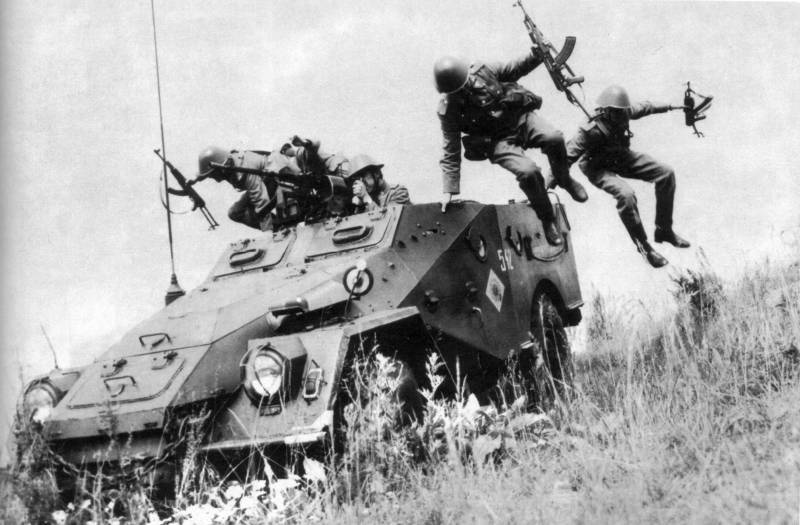
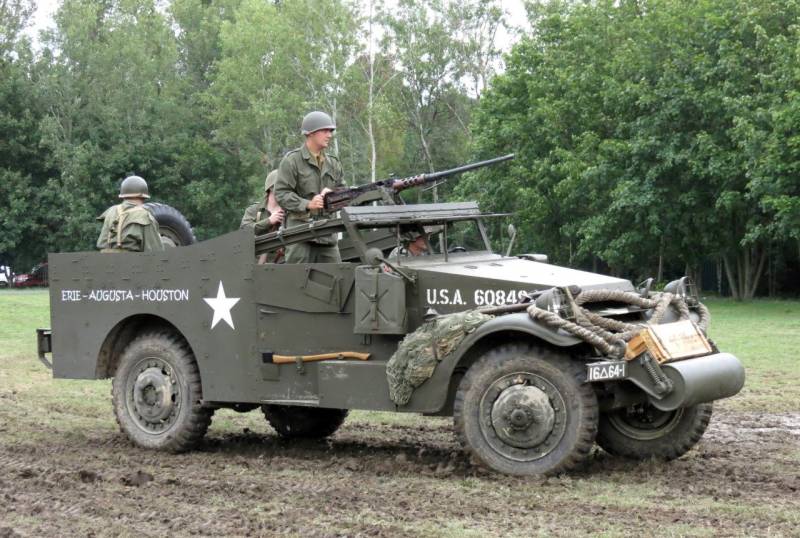
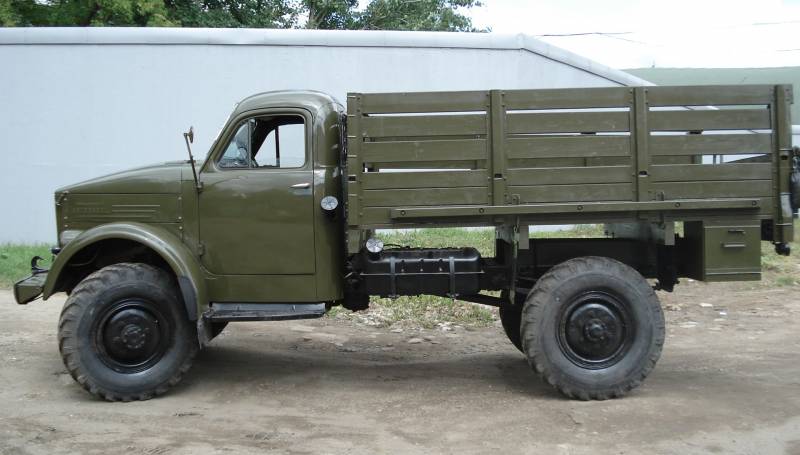
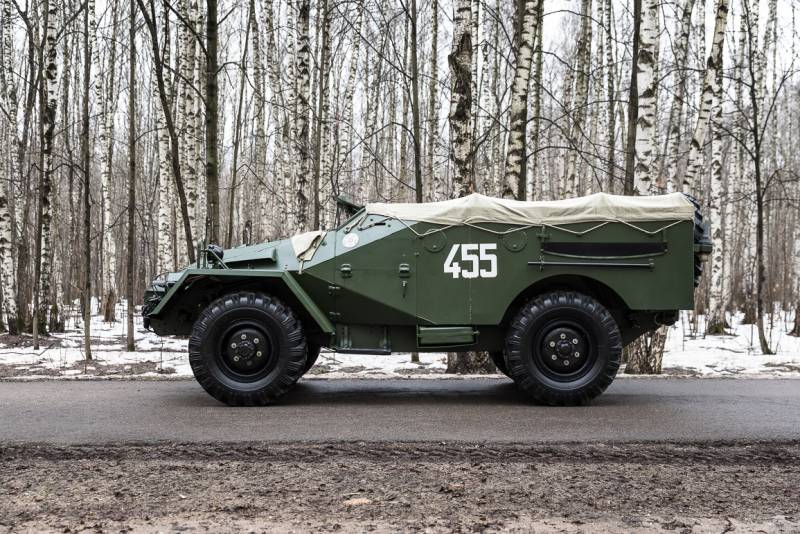
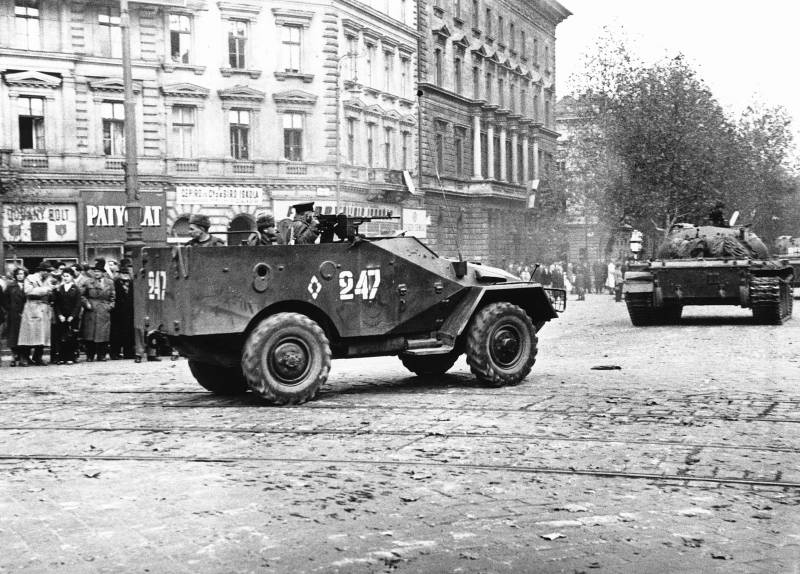
Information